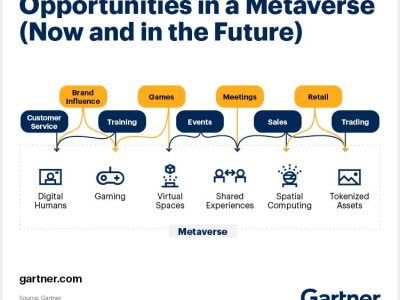CIOs should look to recent graduates and internal options when creating innovative teams.
Deakin University needed a more efficient way to interact with students. When the team couldn’t find the technology needed in the marketplace, they built it in-house.
William Confalonieri, Vice President and CDO at Deakin University, realized that outside vendors either didn’t offer what was needed or were too slow to develop it. With that in mind, the team created the Deakin Genie using parts from the outside, and developing the core internally in the Digital Future Lab. But Mr. Confalonieri says the internal ideation process, rather than the produced technology, is the “center of our competitive advantage.”
CIOs need to build a farm system for new skills — an epic training program for what’s missing.
As ecosystems become more and more essential to digital business, innovation will need to occur at a more rapid pace. It’s still a good principle to build less and broker more, but for progressive organizations, the technology needed might not even be available.
Read More: Ecosystems Drive Digital Growth
“You can’t buy what you need on the market, and startups either aren’t doing it or can’t provide the necessary industrial scale. So you have to build it yourself,” said Andy Rowsell-Jones, research vice president.
Top-performing companies, in particular, tend to depend more on internal development than purchasing outside options. According to the 2016 Gartner CIO Survey, top performers expect to deliver 40% of new critical solutions in-house because the components don’t exist externally. On the other hand, typical and trailing organizations are much more likely to look to already-developed technology outside the business.
Successful innovation hinges, at least partially, on the ability to assemble a team with the correct skills and mindset. CIOs across top, typical and trailing performers cite skills/resources as the No. 1 barrier to achieving objectives.
Build a farm system
Much like internal innovation, CIOs need to create an internal system for creating and acquiring new skills.
“There is an unfortunate truism about skills: You never have the right ones. By the time the marketplace produces them, it has moved on. True innovators build what they need if they can’t buy it,” said Mr. Rowsell-Jones. “Thus CIOs need to build a farm system for new skills — an epic training program for what’s missing. To do this, you hire more raw material than you need, train it and expect turnover. You have to create this raw material; you can’t buy it. The same is true of innovation: If you could buy it, it would be a best practice, not innovation.”
his type of skills gap can only be fixed with management support. Without the buy-in or support of other senior executives, it is difficult to shift the culture of an organization.
Think about internal startups
Even traditional industries, such as banking, are looking to internal teams for innovation. Instead of looking to partner with startups or outside innovators, Simon Haldrup, Executive Vice President of Denmark’s Dankse Bank, created an entire internal team with the specific goal of creating disruptive solutions. Mr. Haldrup noted that the team was composed of people who “would hesitate to update their LinkedIn profiles with the fact that they worked for a bank.” Extending the traditional business model of a bank enabled the organization to reach escape velocity.
Read More: The 2017 CIO Agenda [Infographic]
“The digital team partnered with real estate agents and data providers to provide home listings, pictures and data that create a single end-to-end process,” Mr. Haldrup explained in the 2017 CIO Agenda. “That goes beyond thinking as a bank. Rethinking the customer experience enables the bank to cut costs because it enables us to rethink internal processes.”
Look inside and outside the company
CIOs should also consider looking to less-traditional sources for digital skill sets.
“While there is no better alternative to experienced hires with deep industry and technical digital expertise, the reality is that these people are very hard to find and perhaps do not exist in the numbers the industry is demanding,” said Chris Saul, EMEA Vice President, Digital Strategy, Hitachi Consulting. “However, we’ve also invested quite heavily over the past couple of years in graduates from a wide variety of disciplines. Those early on in their careers create energy and challenge that can be lacking in more-experienced hires.”
Read More: How CIOs Build the Talent Pipeline
Alternatively, with 943 companies in the Hitachi Group, Mr. Saul says they are often able to build teams from inside the company under the banner of Hitachi Consulting. They look to build cross-functional diverse teams on which each member brings a different set of specialties and experience. Mr. Saul says they often have skills “that when brought together, can be extremely effective.” This allows the company to utilize established skill sets, instead of acquiring them.
However, he admits there’s no simple solution to the talent gap problem.
“Talent development and talent acquisition are always a big challenge, and talent does make a huge difference,” said Mr. Saul. “I’ve never found a simple answer to it. It’s just really hard work.”
Get Smarter
Client Research
Gartner clients can read more in the full report, The 2017 CIO Agenda: Seize the Digital Ecosystem Opportunity.
Complimentary CIO Agenda Brief
Read the complimentary CIO Agenda brief.
Gartner CIO Leadership Forum
Gartner analysts, and industry leaders will discuss key issues facing the CIO during Gartner’s CIO conferences taking place May 8-9 in Magaliesburg, South Africa, May 18-19 in Munich and June 6-8 in Toronto. You can follow news and updates from the event on Twitter using #GartnerCIO.










